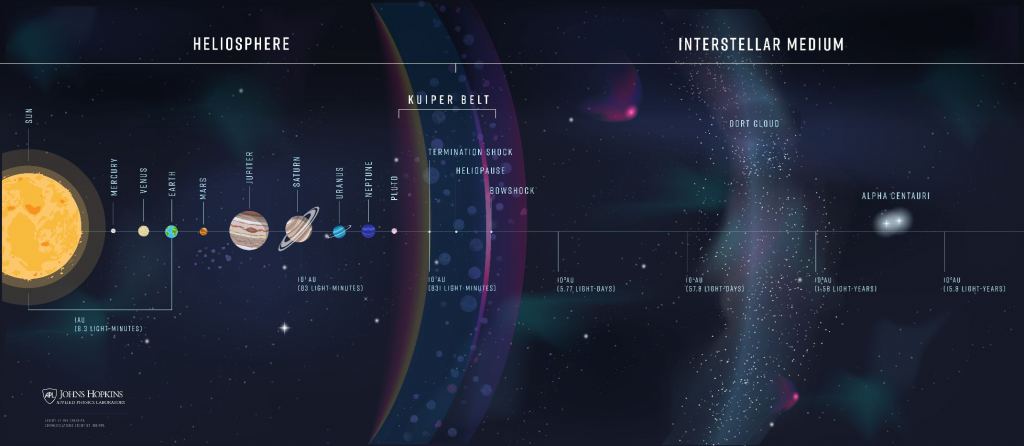A different perspective can do wonders. Perceiving things from a different angle can both metaphorically and literally allow people to see things differently. And in space, there are an almost infinite number of angles that objects can be observed from. Like all perspectives, some are more informative than others. Sometimes those informative perspectives are also the hardest to reach.
Voyager’s two probes did an excellent job in allowing humanity to access some difficult new perspectives simply given their distance from the Earth. But now a team of over 500 scientists and volunteers is urging NASA to go even further to find a better perspective by sending a satellite to a distance 1000 times the distance from the Sun to the Earth – almost 10 times how far the Voyagers have traveled in over 35 years.
The project, currently known as the “Interstellar Probe”, is headed by Dr. Elena Provornikova at Johns Hopkins Applied Physical Lab. She leads a team of over 500 people to help define what the objectives of such an ambitious mission would be.

Credit: Johns Hopkins APL
Some of the primary science will undoubtedly focus on the heliosphere, the area surrounding our star that is subject to the solar wind. Voyager found the edge, but their instruments were not designed to study the phenomena, so they left many unanswered questions in their wake. The new mission would attempt to pick up where they left off.
One of those unanswered questions is about how exactly interstellar gas interacts with the sun’s plasma, which is the current theory for how the heliosphere is created. Additional information about the heliosphere that the team hopes to collect includes what exactly the heliosphere itself looks like and how it is affected as the sun moves through the galaxy.
Credit: SciShow Space YouTube Channel
But studying the heliosphere won’t be the only goal of the mission. Everything from planetary science to observing extragalactic background light is on the menu for possible inclusion in the mission. Part of the selling point of the Interstellar Probe is the wide variety of new observations it would be able to take that have never been available before.
Those selling points are included in the “pragmatic concept study” that Dr. Provornikova and her team will complete this year after a four year effort. Their final report will include proposed details of the mission, including science objectives, instrument payloads, and potential trajectories.
Credit: TMRO YouTube Channel
As with many proposed missions there is still a long way to go before any data from a new perspective is actually gathered. Right now the mission would plan to launch in the 2030s and reach the 1000 AU target around 15 years later. No matter when it actually reaches its destination, with the proper planning and resources, the Interstellar Probe will result in a completely new perspective for science.
Learn More:
EGU – Probing deep space with Interstellar
APL – Interstellar Probe
Space.com – Voyage to the Stars: NASA Study Mulls Options
UT – This is What the Solar System Really Looks Like
Lead Image:
Graphic depicting the Interstellar Probe
Credit: Johns Hopkins Applied Physics Laboratory


It would be better to define what the ‘interstellar space’ is, first.
And, also, it would be better to explain the physical boundary of the Solar System.
Sounds like a great project. However, at the best spacecraft speeds we can generate, even with gravity assists, it will probably take 300 years for this spacecraft to achieve 1000 a.u. Meanwhile back on earth the human monkey will have extincted itself but hopefully there will be functional/conscious? A.I. to receive the signal.